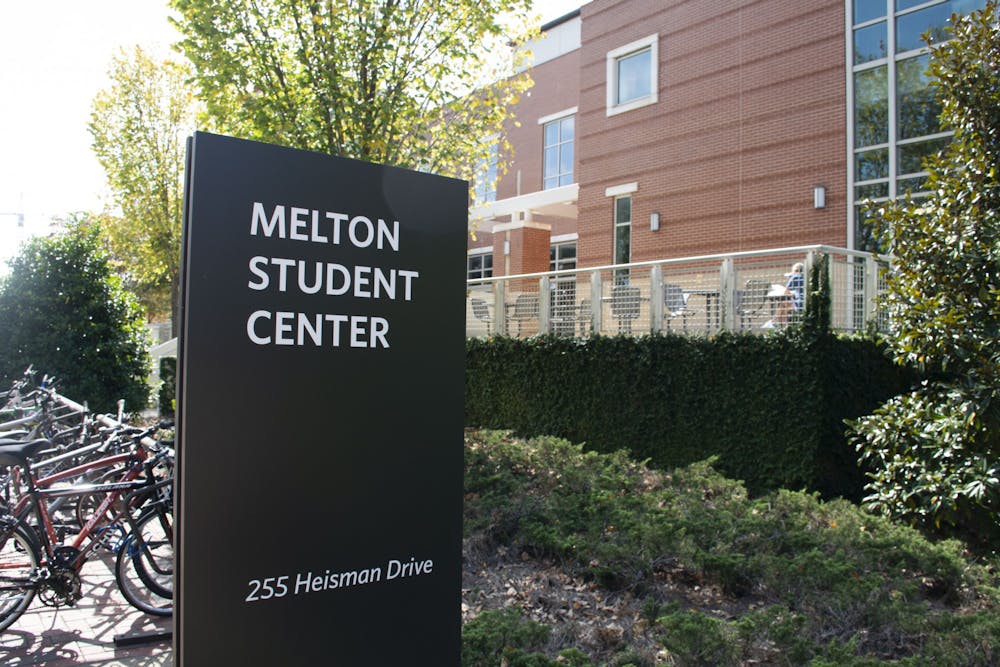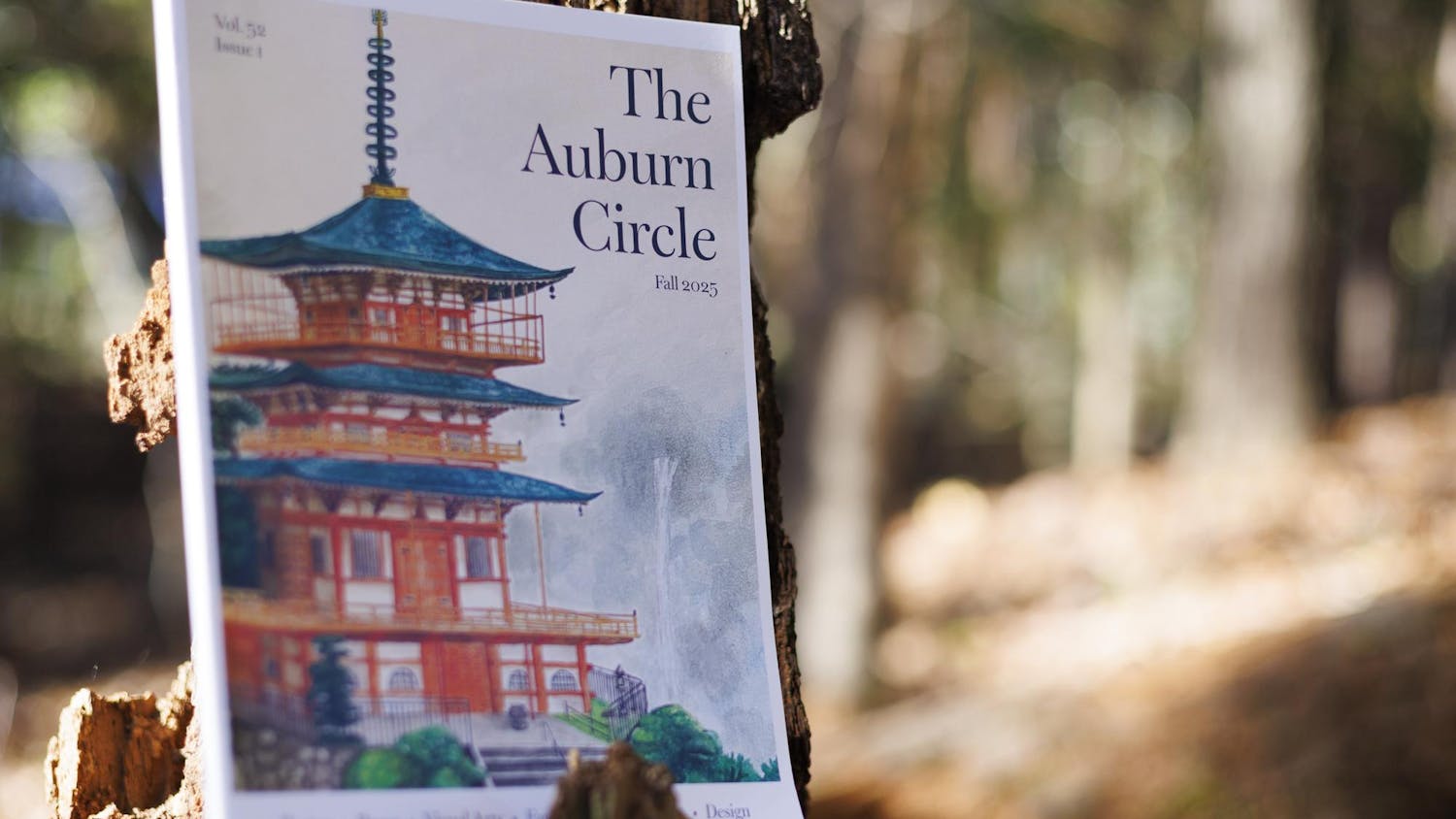During Auburn University Senate on Tuesday, Oct. 20, members of the University administration spoke to faculty about the Auburn Board of Trustees’ task force for buildings and monuments. The task force formed in June in the wake of racial demonstrations over the summer.
Jon Waggoner, corporate secretary to the Board of Trustees, said the task force has been “very busy” regarding actions it can take to improve experiences of Auburn students from diverse backgrounds moving through college. Action items the task force is considering are planned for the immediate future, which Waggoner said are priority, and for the University’s long-term outlook.
“The board realizes the most impactful way to attract and recruit more diverse students is to focus on those who are here now and to make sure they are having a good experience while they’re at Auburn,” Waggoner said. “For that reason, the task force wanted to first focus on the most positive, visible things it could accomplish to really show its engagement.”
One way the board hopes to achieve more diversity, equity and inclusion on campus is through the National Panhellenic Legacy Plaza, a project under construction that aims to honor the history of traditionally Black Greek life organizations. The trustees approved the project at their July 9 board meeting.
“That will be built here soon right in the middle of campus, and it’ll be a nice feature in recognizing the contributions of the traditionally Black fraternities and sororities,” Waggoner said.
At its Sep. 4 meeting, the board went on to dedicate the Student Center to Supreme Court of Georgia Chief Justice Harold Melton, Waggoner said. Melton, a 1988 Auburn graduate, was the first Black SGA president.
“As an aside, [Melton] was president of the student government when I arrived at Auburn and was really great to me then,” Waggoner said. “He’s been a mentor to me in my legal career since, and for those of you who don’t know him his life, his success [and] his integrity create a great example for all Auburn students and alumni, minority and majority alike.”
Though new signage was recently installed heralding the facility as the Harold D. Melton Student Center, the University will hold a formal ceremony dedicating the building to Melton on Nov. 20 at 2 p.m., according to Waggoner. Melton will meet with Auburn officials to be honored outside the facility at that time along with his family.
The board task force has also reevaluated historical markers on campus and on other University properties around the state, Waggoner said. Its first target was a marker outside Ralph Brown Draughon recognizing integration in the 1960s.
“The board resolved to improve the University’s historical marker on campus celebrating racial integration as well as Harold Franklin, Auburn’s first African American student, celebrating [his] contribution to integration,” he said.
Waggoner said the task force then conducted an extensive statewide search for Civil War markers and monuments across all of Alabama’s 67 counties to reconsider their interpretation of the event from a current perspective.
“For over 30,000 acres, [the task force was] looking to try to determine whether there were any Civil War markers,” he said. “We found a single marker in Baldwin County that was part of a local Civil War trail there, and in fact, that one marker depicted a Union army encampment.”
Among the main purposes behind the task force’s formation, however, was to reassess names of buildings, roads and structures on campus dedicated to past state and University officials who made controversial racial comments or had a history associated with racial controversy. In June, petitions arose scrutinizing facilities such as Wallace Hall and Bibb Graves Amphitheatre for these reasons.
Waggoner said the task force has sought to “carefully study the history” of such individuals and structures in its reassessment through several different methods.
“First, we sent everyone a copy of ‘[The] Village on the Plain’ which is a history of Auburn written by Auburn’s long-term former head of the Auburn University Libraries Special Collections and Archives Department, Dwayne Cox,” he said. “It’s just a great way of understanding the context and the history of building names. The task force has been reading and discussing that.”
The task force additionally requested the assistance of Greg Schmidt, associate professor of the University’s Special Collections and Archives, to research names present on Auburn structures that have raised concerns. Waggoner said Schmidt put together a completed report the task force is reading over.
Now, the task force is deciding what uniform criteria it will use when determining whether to rename a structure on campus, Waggoner said.
“The task force believes that in performing its work, it should consider creating a policy that can be utilized when they look at buildings now and future buildings to try to make sure they do this deliberatively and pursue it to a process rather than randomly looking at things,” he said.
Discussion is still underway among task force members at this point on renaming existing structures on campus because of their namesakes, Waggoner said, which may take some time. A 2017 Alabama state law, the Memorial Preservation Act, has made the process of renaming structures tied to individuals more difficult as offenders may be fined $25,000 for changing the name of a building in this case. However, the act refers mainly to K-12 public schools and two-year colleges, according to the Montgomery Advertiser.
Susan Youngblood, associate professor and associate department chair in the Department of English, questioned the Board of Trustees’ approach to the act.
“How does the Board of Trustees plan to address the possibility that a building, road or structure that needs to be renamed won’t have the renaming approved at the state level?” she asked. “Is the board willing to commit to change anyway despite the fine or would the state level decision be ... the end of the discussion?”
Waggoner, although a lawyer himself, was not able to provide a direct answer as a non-board member and the only link to the Board of Trustees present, but he said some institutions have eaten the cost of the fine while others have contested the wording of the state law in connection to their campus.
“I think that’s one thing the board would have to look at is to say, ‘Is the statute applicable to Auburn University or not, and if so, is the building that it would consider something that should be [left alone] in light of it?’” he said. “My short answer to your question is they have not addressed that because they haven’t gotten the policy together and analyzed the buildings, but it’s a pretty complex question on the legal side.”
Concluding his report, Waggoner said the board task force seeks to act on its goals in a reasonable amount of time while ensuring it does not overlook important details.
“Like everything else in Auburn, there’s going to be some people who say the process is going too fast and others who think it’s going too slow, but in the end the task force is approaching the matter with the same acuity and deliberate that [faculty] demand from [their] own students,” Waggoner said.
Do you like this story? The Plainsman doesn't accept money from tuition or student fees, and we don't charge a subscription fee. But you can donate to support The Plainsman.

Tim Nail, junior in journalism, is the campus editor for The Auburn Plainsman.





